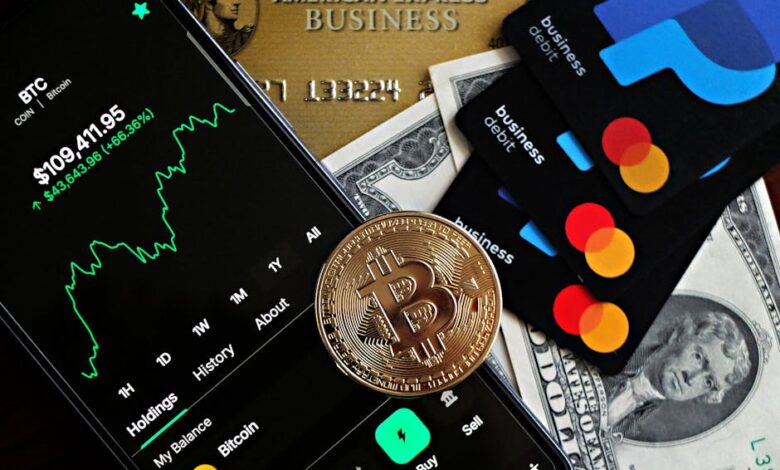Venmo and PayPal Users Will Finally Be Able to Send Money to Each Other

Venmo and PayPal Users Will Finally Be Able to Send Money to Each Other
Estimated reading time: 6 minutes
-
Direct money transfers between Venmo and PayPal are being introduced, ending a long-standing divide despite common ownership.
-
This integration eliminates the need for complex, time-consuming workarounds, making digital payments seamless and instant.
-
The move significantly enhances user experience, simplifies financial management, and unifies the PayPal ecosystem for millions of users.
-
It signals a maturing of the fintech landscape, prioritizing consumer convenience and potentially driving broader interoperability among payment platforms.
-
Users should update their apps and link accounts to take full advantage of this new, secure, and convenient payment flexibility.
- The End of Convoluted Workarounds: Why This Matters
- How the New Interoperability Works: Seamless Transfers
- Broader Implications: A Win for Consumers and the Fintech Landscape
- Conclusion
The landscape of digital payments is on the cusp of a monumental shift. For years, users of popular peer-to-peer (P2P) payment platforms Venmo and PayPal have navigated a frustrating divide, despite both services being owned by the same parent company, PayPal Inc. The much-anticipated news has finally arrived: users will soon be able to send money directly between Venmo and PayPal accounts, marking a significant leap forward in financial convenience and integration.
This development is not just another update; it’s a paradigm shift for millions of individuals and small businesses. Imagine a world where the friction of digital money transfers vanishes, replaced by effortless transactions regardless of the recipient’s preferred platform within the PayPal ecosystem. This isn’t merely a feature addition; it’s a response to a long-standing user demand that will fundamentally alter how we interact with our digital wallets.
The inability to directly transfer funds between these two platforms has been a peculiar anomaly. While both services serve similar functions – facilitating quick, easy payments between individuals – they have largely operated as separate silos. This forced users into roundabout methods, often involving bank accounts as intermediaries, adding layers of complexity and delays to what should be instantaneous transactions.
The implications of this integration are profound. It promises to simplify financial management, enhance user experience, and unlock new possibilities for personal and commercial exchanges. No longer will you need to ask a friend, “Do you have Venmo or PayPal?” – the answer will practically be irrelevant. This move signals a deeper commitment from PayPal to unify its offerings and provide a more cohesive, user-centric payment experience across its vast network.
The End of Convoluted Workarounds: Why This Matters
For a long time, the digital payment world, despite its innovations, has suffered from a peculiar kind of fragmentation. While various apps sprung up to make sending money easier, a wall often stood between them. This was particularly true for Venmo and PayPal, which, despite sharing a corporate parent, acted like estranged siblings in the P2P transfer space. This meant that if you had money in your Venmo balance and needed to pay someone who only used PayPal (or vice-versa), you faced a dilemma.
The standard solution involved withdrawing funds from one platform to your bank account, waiting for it to clear, and then re-depositing it into the other platform. This process could take several business days, making urgent transfers impossible and adding unnecessary administrative burden. Alternatively, some users might transfer money to a linked debit card, only to send it again from the other app, often incurring small fees or facing withdrawal limits.
It’s important to state the obvious truth: “For years, customers have been using convoluted workarounds to transfer money between the two services.” This simple fact underscores the immense frustration and inefficiency that countless users have endured. These workarounds not only consumed valuable time but also sometimes involved transaction limits or hidden fees, making an otherwise simple act of sending money unnecessarily complicated. The lack of direct connectivity ran contrary to the very spirit of instant digital payments that both platforms championed.
This long-awaited integration addresses this fundamental pain point directly. It removes the need for intermediary steps, reduces waiting times, and streamlines the entire process. For consumers, this means greater flexibility and control over their funds, allowing them to manage their money more efficiently across the platforms they already use and trust. It’s a move that brings genuine convenience to the forefront, validating years of user feedback and requests.
How the New Interoperability Works: Seamless Transfers
The arrival of direct transfers between Venmo and PayPal is designed to be as intuitive and seamless as any other transaction within either app. The underlying technology aims to bridge the gap effortlessly, presenting users with a clear, straightforward option to move funds. While the precise interface might vary slightly between the two applications, the core functionality will revolve around identifying a recipient across the combined network and initiating a transfer directly.
Expect to see options that allow you to select a recipient by their Venmo or PayPal username, email address, or phone number, regardless of which app you initiate the transfer from. The system will intelligently recognize the recipient’s linked accounts within the PayPal ecosystem, enabling the money to flow directly from your balance in one app to their balance in the other. This eliminates the need for manual bank transfers or tedious re-entry of details.
This enhanced connectivity will undoubtedly simplify financial interactions for a vast user base. Whether you’re splitting a restaurant bill, sending money to a family member, or paying for goods and services, the choice of platform will no longer be a barrier. The emphasis is on speed and simplicity, reflecting the modern user’s expectation of instant digital gratification.
Actionable Steps to Utilize the New Feature
To ensure you’re ready to take full advantage of this groundbreaking integration, follow these simple steps:
-
Update Your Apps to the Latest Version:
Before attempting any transfers, ensure both your Venmo and PayPal applications are updated to their most recent versions. Developers roll out new features and bug fixes regularly, and this interoperability will undoubtedly be part of a major update. Check your app store (Google Play Store for Android or Apple App Store for iOS) for pending updates and install them. Running the latest version guarantees access to all new functionalities and security enhancements.
-
Link and Verify Your Accounts (If Prompted):
While the goal is seamless transfer, some initial setup or verification steps might be required to securely connect your Venmo and PayPal profiles. Look for a new option within either app, possibly in the settings or a dedicated transfer section, that allows you to link your accounts. This usually involves a one-time authentication process to confirm you own both accounts. Ensure your linked bank accounts and debit cards are up-to-date and verified on both platforms for smooth transactions.
-
Initiate a Direct Transfer:
Once your apps are updated and any necessary linking is complete, you can begin sending money directly. Open your preferred app (Venmo or PayPal). When you go to send money, you should now have the option to select a recipient who uses the *other* platform. Enter the recipient’s details (username, email, or phone number), input the amount, add a note, and hit send. The system will route the funds directly to their chosen platform within the ecosystem, often with immediate effect.
Real-World Example: Sarah and John’s Seamless Exchange
Consider Sarah, who needs to pay her friend John back $50 for concert tickets. Sarah primarily uses Venmo for her daily transactions, while John prefers to keep his funds in PayPal for his online freelance work. In the past, Sarah would have had to transfer $50 from her Venmo balance to her bank account, wait a day or two for it to clear, and then send it from her PayPal account (or vice versa), which was cumbersome.
With the new integration, Sarah simply opens her Venmo app. She taps “Pay or Request,” selects John from her contacts (or enters his PayPal email/username), inputs $50, adds a note “Concert tickets,” and hits send. Venmo’s system, recognizing John’s linked PayPal account, routes the $50 directly into his PayPal balance instantly. John receives a notification, and the money is there, ready for him to use for his next freelance payment. No workarounds, no waiting, just effortless transfer.
Broader Implications: A Win for Consumers and the Fintech Landscape
This integration is far more than just a convenience feature; it signals a maturing of the digital payment industry. For consumers, the benefits are clear: unparalleled flexibility, reduced friction in financial transactions, and a true sense of control over where and how their money moves within the PayPal ecosystem. This means less time spent on administrative tasks and more time engaging with the people and services that matter.
Beyond individual users, this move holds significant implications for the broader fintech landscape. By breaking down a significant internal barrier, PayPal sets a precedent. It demonstrates a willingness to prioritize user experience and interconnectedness over maintaining strictly separate brand silos, even within its own corporate family. This could encourage other payment providers to explore similar integrations, fostering a more interconnected and user-friendly financial environment across the board.
Increased interoperability ultimately drives competition and innovation. When users are less locked into a single platform, companies are incentivized to provide better services, lower fees, and more appealing features to retain and attract customers. This integration could also pave the way for more sophisticated combined offerings, such as unified loyalty programs or analytics across both platforms, leading to an even richer user experience.
Security remains paramount, and any integration of this nature will have robust measures in place. Users can expect the same high level of encryption and fraud protection that both Venmo and PayPal currently offer independently. The focus will be on secure, authenticated transfers, maintaining user trust while enhancing convenience.
Conclusion
The long-awaited ability for Venmo and PayPal users to send money directly to each other marks a pivotal moment in digital payments. It’s a testament to the power of user demand and the ongoing evolution of financial technology. By eliminating cumbersome workarounds and fostering true interoperability, PayPal is set to deliver an unprecedented level of convenience and flexibility to millions of users.
This integration simplifies daily financial interactions, enhances overall user experience, and sets a positive precedent for the future of connected digital services. The era of unnecessary payment barriers between these two popular platforms is finally over, ushering in a new age of effortless, integrated money transfers.
Ready to experience the future of digital payments?
Keep an eye on your Venmo and PayPal apps for the official rollout of this feature. Update them regularly and explore the new options as they become available. Share your thoughts and experiences with this new integration – how will it change the way you send and receive money?
Frequently Asked Questions
Q: What is the main new feature being introduced for Venmo and PayPal users?
A: Users will soon be able to send money directly between their Venmo and PayPal accounts, eliminating the need for intermediate bank transfers and streamlining the process.
Q: Why is this integration considered significant?
A: It resolves a long-standing user frustration by removing complex workarounds, significantly simplifies digital payments, enhances user experience, and unifies the financial ecosystem under PayPal’s umbrella.
Q: How can I prepare to use this new feature when it rolls out?
A: Ensure both your Venmo and PayPal applications are updated to their latest versions. You may also need to follow prompts within either app to link and verify your accounts securely.
Q: Will there be any fees for direct transfers between Venmo and PayPal?
A: The article doesn’t explicitly detail fees for direct transfers. Typically, P2P transfers between friends and family are free, but users should always review the updated terms of service within the apps upon rollout for any specific charges related to this new interoperability.
Q: Does this integration impact the security of my transactions?
A: No, the article assures that robust security measures, including the same high level of encryption and fraud protection offered independently by both Venmo and PayPal, will be in place to ensure secure, authenticated transfers.





